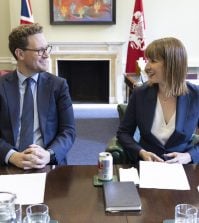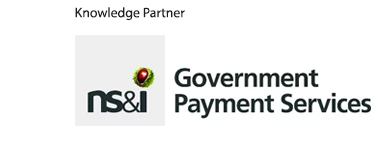A new breed of public servants: skills and staffing after the pandemic

Civil servants have broken new ground during the COVID-19 pandemic – using hackathons, scientific advisory groups and private sector volunteers to shape policy and deliver services, for example. But at the Global Government Summit, it became clear that these innovations may be dwarfed by the changes to come. Matt Ross listens in as leaders debate the future of governance
When the pandemic struck, demand for some public services suddenly spiked. Many countries responded by moving staff between departments and agencies, short-circuiting the usual processes to get people where they were needed; some even reached out to furloughed private sector staff.
“There was a need for surge manpower: we needed people to be safe distancing ambassadors; to distribute masks; to give out COVID support grants,” recalled Jacqueline Poh, Deputy Secretary of the Prime Minister’s Office Strategy Group in Singapore. “Sectors like aviation and hospitality were quite badly disrupted, and we were able, through our Public Service Division, to channel that manpower to some of the needs of the Public Service. Singapore Airlines stewardesses were helping out, working in hospitals rather than hospitality!”
At GGF’s Global Government Summit in January, senior leaders from 12 countries discussed how civil services tore up the usual rule books to protect their populations from COVID-19. “We deployed without asking a whole lot of permissions or made rule changes. We put together secondments with no formal mechanisms in place,” commented one national civil service leader. If governments can hold on to some of these new flexibilities in the years to come, they’ll be better able to deal with both sudden disasters such as the pandemic, and the constantly-changing public policy challenges that preoccupy leaders in more normal times.
COVID-19 has – as these staff redeployments illustrate – seen civil servants acting rapidly and radically to meet people’s needs. But building responsiveness is a complex task: Hannah Cameron, Deputy Commissioner in New Zealand’s Public Service Commission, pointed out that few systems can respond equally well to a global pandemic, and to the differing needs of local communities.
“Sometimes there’s a tension between wanting a system to be set up at a local level, to be owned and governed by local communities, and needing the whole system to flex and operate seamlessly,” she commented. Strengthening central controls and unifying systems brings “advantages in terms of interoperability across the system, but if we went too far we’d start to lose that community engagement.” And there’s a challenge, she added, in extending civil services’ newfound responsiveness beyond the pandemic. “In a crisis, you can just say: ‘We need you to go and do this’, and they’ll do it,” she said; the task now is “to put in a more sustainable infrastructure,” maintaining that flexibility over the years to come.
Outside-in policymaking
In part, the answers lie in making routine some of the innovations developed during the pandemic. In Estonia, for example, “a public-private cooperative e-hackathon was held to hack the crisis: the community created several quick solutions, such as a crisis chatbot server, and a website linking medical volunteers to hospitals in need,” explained Henry Kattago, Strategy Director at the Government Office of Estonia. Officials are now building a “single policymaking platform allowing co-creation”, involving external stakeholders and experts: “It’s one step further from engagement or social dialogue.”
Inspired by Estonia’s efforts, Germany created its own ‘We Against Virus’ hackathon, explained Matthias Freundlieb, Deputy Director-General in the country’s Federal Chancellery. More than 28,000 people took part, with 150 ideas moving into an “enabler programme” and 20 receiving direct funding.
In another initiative designed to bring in external expertise, Germany also “founded a new, state-owned software company: the Digital Service for Germany,” Freundlieb continued. “This is a very new step for us.” The firm will develop software for public authorities and support them in IT delivery projects, boosting the government’s digital capacity and supporting knowledge transfer across departments.
Other examples of “outside-in” policymaking include governments’ work with employers and unions to shape financial support services, commented Gert Jan Buitendijk, Secretary-General at the Netherlands’ Ministry of General Affairs; and then there’s the establishment of scientific advisory groups to guide national policymaking. Here, he noted the importance of continuing to amend new initiatives as the situation develops: having initially staffed its scientific advisory panel mainly with epidemiologists, during the summer the government widened its membership. “We tried to broaden our view and make more balanced policy, with much more interest in the societal, social, economic and behavioural aspects of crisis handling,” he explained.
Building agile organisations
Such initiatives can improve individual policies and services – but to build truly responsive public bodies, wider changes are required. Agile organisations tend to have certain characteristics in common, commented Samir Bedi, ASEAN Workforce Advisory Leader at knowledge partner EY. They reward collective endeavour, “reflecting more on team-based than on individual performance.” They are flatter, with few hierarchical boundaries. They collaborate well across organisational seams. And they’re connected, using technology to link up their work and amplify their impact.
Work to build these characteristics rests on good strategic workforce planning, he said, emphasising that this is not simply a job for HR teams: staff recruitment and development policies must be tied closely to the employer’s strategic plans. And Bedi argued that workforce development is going to become ever more crucial to attracting and retaining good staff: “Learning will soon become the ‘new dollar’,” he said, “more important in the value proposition for employees maybe even than their compensation and benefits.”
Finally, Bedi stressed the need to reshape staff incentives, performance management and target-setting around organisations’ current and predicted needs. “Very often, we’re trying to do transformation, but we’re living with the metrics we built many years back,” he said. “Remember that what gets measured gets done, and what gets rewarded gets repeated.” So it’s essential that individuals’ targets reflect, for example, the aims of fostering cross-departmental collaboration and the need to build a more digitally-skilled workforce.
Leadership and skills after the pandemic
There’s one other requirement to build in here, commented Cameron: “Not only does the public service need to deliver services and drive budgets and all of those things, but it also needs to do it with integrity and in a value-based way.” In New Zealand’s recent civil service reforms, she added, “we put a lot of emphasis on rewarding not only how people deliver on projects, but also how they do their work” – with award schemes, for example, recognising “frontline workers who show great spirit of service”.

In Singapore, the Public Service has refreshed its Core Competency Framework around the “new skills and mindsets we need to be ready for the future,” said Leo Yip, Head of the city-state’s Civil Service. The new framework, he explained, forms a body of competencies to help officers become more well-rounded: “‘Heart’ – your sense of commitment, service and empathy for the public. ‘Head’ – your judgement and ability to make sound decisions. ‘Hands’ – your ability to operationalise ideas and policies with a ‘whole-of-government’ attitude and work effectively with citizens. And ‘Legs’ – your drive to innovate and learn continuously.”
For leaders, he added, there are two additional dimensions: “One is being an effective people developer who cares, inspires and motivates staff to be engaged at work. And the other is the duality of delivering excellence today, but at the same time innovating and building for tomorrow. There’s a positive tension between the two; but it’s a duality, because you need to do both at the same time.”
To build these skills and behaviours in government, said Yip, leaders are making “a very deliberate effort to have our people go through a diverse range of experiences, including international experiences, working in the private sector, and roles in policy development as well as implementation.” And civil services should also reflect the public’s ethnic and gender diversity, commented one national leader: “Diversity is an important component for creativity and productivity,” they said. “The research shows that greater diversity leads to better outcomes.”
Thinking big on structural change
So workforce reforms are key to progress. But in the view of Lord Herbert, a Conservative peer and former minister who’s chairing the Commission for Smart Government, the UK at least will also have to consider major structural reforms. The commission, he explained, comprises 20 senior figures, including former civil servants, special advisers, ministers, business leaders, tech experts – and departmental non-executive directors, giving it traction inside government.
“We set the commission up because of developing concerns that the UK government was no longer equal to the challenges facing the country – failing to match strategic vision with execution,” he explained. Alongside projects on digital capabilities and the relationship with regional and local authorities, it’s also focusing on skills; and not just those of civil servants. “The challenges are as much about the politicians,” he said, highlighting how they’re appointed and trained. “It’s essential that we do begin to break into that argument, which is one the politicians themselves are rather keen, I think, to gloss over,” he added.

At the heart of the commission’s work is its examination of the centre of government: the Cabinet Office, Number 10 and the Treasury. The Cabinet Office is meant to implement the prime minister’s government-wide policies, he explained, but it’s “much bigger and better resourced than the prime minister’s office”. In Herbert’s view, “there is insufficient support for the prime minister,” and the PM lacks the levers to bend Treasury spending around his strategic goals.
Without a single strategic centre controlling both government-wide policies and the financial levers, he argued, “resource planning is very un-strategic. There’s no reliable matching of resources to priorities, with clarity about outcomes. And we think this confusion explains a lot of the reasons why government finds it difficult, very often, to follow through initiatives to successful outcomes.”
Moving onto solutions, Herbert suggested “the creation of either a PM’s department, or a single central ministry in charge of strategy, financial planning and holding departments to account” to help address these problems. This, he argued, could close the “fissure between the three central pillars of government”, reshape budgets and programmes around policy goals rather than organisational remits, and refocus spending on achieving policy outcomes rather than carrying out activities.
As one national civil service leader pointed out, in many countries delivering such changes would require legislative and constitutional reforms. Ministerial and civil service accountabilities can present “legal and foundational constraints” on governments’ ability to coordinate action across departments, they said: “If we want to make fundamental changes that enhance our flexibility, we may have to address some of those legal issues within our political and constitutional systems.”
Sharing and protecting accountability
Suma Chakrabarti – a former British permanent secretary, EBRD chief, and a member of Herbert’s commission – recognised the need for legislative changes. “We’ve been trying to move towards an outcomes-based approach – but most of those are not single departmental outcomes,” he said. So to realise those goals, permanent secretaries would have to share the process of building policies and services – and that “would mean that a single perm sec could not be held to account any more for a single objective.” When successful delivery depends on action by a group of perm secs, he concluded, then “actually, you potentially need to hold the group accountable.”

Former President of the European Bank for Reconstruction and Development (EBRD), United Kingdom
As well as these issues around accountabilities, said one participant, civil services face constraints on their flexibility in areas that are “heavy on rules to achieve accountability and probity in public administration.” In procurement, for example, many countries have used emergency procedures to buy urgently-required medical supplies – but as Suma Chakrabarti pointed out, that comes with its risks. “Generally, the last year has shown the importance of frameworks rather than very, very detailed guidelines,” Chakrabarti commented. “But you have to be careful with that – and there’s been a huge criticism of the UK system. We know from the National Audit Office that what happened in terms of handing out contracts without competition went too far.”
But while Chakrabarti was well aware of the risks around short-circuiting established processes in an emergency, he believed that the substantive reforms outlined by Herbert could help the UK government both to set strategic priorities, and to marshal the funds and networks required to deliver them. It’s time to get past the “politics of trying to please everyone,” he argued, introducing “a strategic, more prioritised approach” – even if that means challenging “a century-plus of behaviours in the British civil service and Parliament.”
Civil services around the world have adapted rapidly during the pandemic – finding new ways to create policies, build services and develop capabilities. For most of that period, commented Holland’s Buitendijk, the priority has been disaster response – but “after 11 months of crisis, the long-term views and long-term risks are coming back into policymaking.”
Even while the Dutch government handles the second wave of COVID-19, he added, “we’ve forced ourselves to think about how our organisation will be after the pandemic.” By the time that civil servants can finally lift their eyes to the horizon again, they’ll have learned a huge amount about how to build more responsive organisations – preparing themselves both for the next crisis, and for the intense, ever-shifting demands of governance in the 21st century.
About Matt Ross
Matt is Global Government Forum's Contributing Editor, providing direction and support on topics, products and audience interests across GGF’s editorial, events and research operations. He has been a journalist and editor since 1995, beginning in motoring and travel journalism – and combining the two in a 30-month, 30-country 4x4 expedition funded by magazine photo-journalism. Between 2002 and 2008 he was Features Editor of Haymarket news magazine Regeneration & Renewal, covering urban regeneration, economic growth and community development; and from 2008 to 2014 he was the Editor of UK magazine and website Civil Service World, then Editorial Director for Public Sector – both at political publishing house Dods. He has also worked as Director of Communications at think tank the Institute for Government.



Related Posts
Latest News
-
How governments are using mobile IDs to transform services for citizens
As governments around the world look to deliver digitally-enabled services,...
- Posted July 14, 2023
- 1
-
From period pain to heart disease, the gender health gap is real – here’s how to close it
For decades, women’s health has been chronically underfunded and under-researched....
- Posted June 12, 2025
- 0
-
UK Spending Review sets out how government will make reform of the state happen
The UK government has set out how it will fund...
- Posted June 11, 2025
- 0
-
UK Spending Review 2025: live updates
Chancellor Rachel Reeves is setting out details of the UK...
- Posted June 11, 2025
- 0
-
Government structures ill-equipped to deliver climate-resilient infrastructure, report finds
Weak adaptation plans, undefined roles and responsibilities, and a lack...
- Posted June 10, 2025
- 0
-
Brazilian pilot explores letting citizens control – and sell – their personal data
A pilot project in Brazil will explore enabling citizens to...
- Posted June 10, 2025
- 0
-
United Arab Emirates launches training programme for chief AI officers
Chief artificial intelligence officers across federal government agencies of the...
- Posted June 9, 2025
- 0
-
UK water industry review urges improved environmental regulation
A government review of the privatised water industry in England...
- Posted June 9, 2025
- 0
Partner content



Related events





















